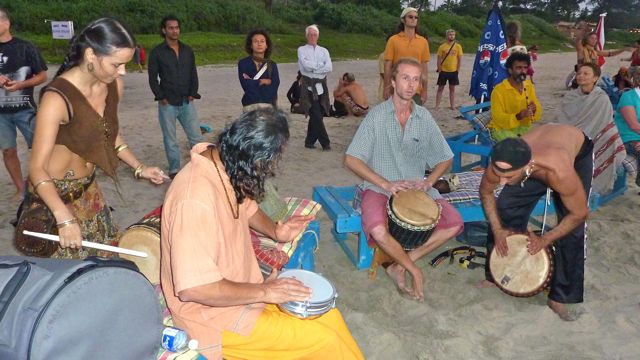You have just been to your first drum circle and you are fully charged up and excited to play drums. It was a wonderful and eye opening experience you will never forget! Or maybe you have been to several drum circles or drumming events. It was fun and exciting to play your drum with other people. You want to do it more and more. So what happens next? Maybe you are having fun playing in your home to a CD, DVD, iTunes or by yourself at the beach.

But sooner or later you start to get bored with yourself. Everything starts sounding the same. Where is the fun? What happened? Is it because there is no one to play with. Gradually the magic wears off and you do not feel like playing the drum, you do not have time and the drum is now becoming furniture. One manufacturer of djembes I kbow sells 100,000 drums a year. Where do they all go? Who is playing them? Well frankly a lot of them are not being played.
People often get bored because they never took the time or were not shown in depth how to learn to play the actual instrument. Drum circles are great, especially as an introduction to experience the magic of drumming. Something happens in those groups and everyone can feel it. But a drum circle is only an experience and introduction as a large group of people does not offer you the opportunity to really tune in to making the sounds correctly on your instrument.
Sure, I can show you how to hit the drum in one class or at a drum circle or even at a drum jam or party. But learning how to play drums is a process that takes place over a period of time. And this process takes much fine tuning.
The djembe is an instrument like any other instrument . It takes time energy, focus and technique to play the drum correctly. And when you learn to play or speak on the drum it really becomes fun to play it. And when it is fun, you naturally want to learn more and experiment more. It sounds and feels better and you will never get bored!

Making the correct sounds or syllables on your djembe or conga takes practice and time. There are many ways to learn it, you can watch a “How to Play Djembe” DVD, take a class with an esxperienced teacher (my suggestion) or try and figure it out on your own. But no matter what, you need to make distinguishable tones, slap and bass tones on your drum. Clean, clear and full sound.
No matter how you go about learning to do this you need to practice or repeat whatever it is you are learning over and over. Drumming takes repetition. I suggest watching yourself in the mirror for part of your practice sessions so you can “self correct” and check out strange faces you might be making, irregular breathing patterns, your posture and many other details. It never ceases to amaze me how many mistakes I am still making even after all these years!
Learning to play drums takes time. Be patient and kind to yourself especially if it does not come easily at first. If you are in a drum class or taking drum lessons and you are one of the slower learners don’t worry. I am always one of the slowest learners. But, I take it home and really practice it until I get it. I seek out help if I need to as well. There is no substitute for time spent learning and practicing.
I was recently asked to teach a large class in Asia. The person doing the hiring wanted to know if I could teach absolute beginners how to play djembe in 2 days. They also wanted a certificate that they were now ready to teach. I am not joking or making this up. When I told the person the truth that it was not possible I was not hired. So here I am writing about it instead!

Once you have learned to make the basic sounds you then need to refine them as well. The slap or pop sound on a djembe or conga can take years to perfect and after 30 years I am still working on mine as well.
A tip for making slap sounds on a djembe is to attack the drum like you are hitting a mosquito. Not to be violent, but to focus your intent. When you hit a mosquito you hit it as quick as you can, with maximum impact, but not so hard that you hurt yourself. You also pull back and release quickly. When you make an open slap on a djembe you do the same thing. Try pretending there is a mosquito on your arm (unless you live in my old neigborhood in Hawaii where there will be real ones!) Hit the pretend mosquito, watch your technique then try that on your drum.
When you play rhythyms you have learned or made up practice them slowly with the goal of your practice session to be completely different sounds from each other. Your bass is pure bass, your slap is pure slap your tone is pure tone. Too many tiumes the sounds sound too much like each other. When you have this differential then you can eexperience trying to alter the sounds. Try different types of slaps for example the “press ka” by holding one side of the skin down while you slap. A dry slap, a cup slap. To see a video of some slap happy slap techniques click on the brown link below:

